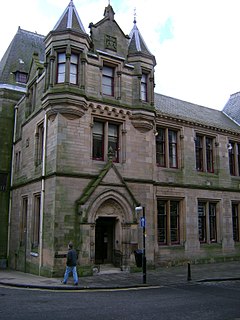Evelyn C. McDonald
Arts & Culture
September 5, 2018 11:10 a.m.
“There is not such a cradle of democracy upon the earth as the Free Public Library, this republic of letters, where neither rank, office, nor wealth receives the slightest consideration.” — Andrew Carnegie

Confession – I love mystery stories. I just finished reading a series that was set in a small town with a Carnegie Library. The books mentioned that the first Carnegie Library had been built in Dunfermline, Scotland, by Andrew Carnegie, the wealthy Scottish-American industrialist. Since Scotland was my mother’s home country, I was intrigued. And in this age, what do you do when you’re intrigued? Go to Wikipedia and see what you can find out.
Carnegie migrated to the United States with his parents in his teens. He became wealthy in the railroad and the steel industries. Later in life, he gave grants to communities so that they could build public libraries. Nearly 1700 libraries were built in this country with Carnegie’s grants. From December 1901 through February 1917, Florida received funding to build 10 Carnegie public libraries. Of the 10, three have been torn down but the other buildings are still in operation though not always used as libraries. The Jacksonville Public Library’s original building was funded in part by Carnegie and now houses a law firm.
Four academic libraries were also funded in Florida – Florida A&M, Stetson, Rollins, and Fessenden Academy. Tallahassee was offered the money for a library but turned it down as Carnegie’s rules said the library had to serve everyone. As a result, the money went to the State Normal and Industrial College for Colored Students (now Florida A&M). Fessenden Academy Library was absorbed into the Marion Public School District and the building is still in use. Stetson’s library is now Sampson Hall.
Carnegie wanted not only to fund a library project in a community but to keep it growing. The financial restrictions on the grant were that the communities had to have building sites and raise matching funds. The communities had to agree to use public funds to support the libraries and spend at least 10 percent of the amount of the grant annually on operations and maintenance.
In his youth, Carnegie felt that he had benefited greatly from access to the personal library of one of his patrons. He felt that if he were to acquire wealth, he would use it to see that others could have the opportunities he had.
The original library in Dunfermline has an inscription over the door that reads “Let there be light.” Carnegie felt that libraries provided that light. I believe they still do.
 Evelyn McDonald moved to Fernandina Beach from the Maryland suburbs of Washington, D.C. in 2006. Evelyn is vice-chair on the Amelia Center for Lifelong Learning and is on the Dean’s Council for the Carpenter Library at the UNF. Ms. McDonald has MS in Technology Management from the University of Maryland’s University College and a BA in Spanish from the University of Michigan.
Evelyn McDonald moved to Fernandina Beach from the Maryland suburbs of Washington, D.C. in 2006. Evelyn is vice-chair on the Amelia Center for Lifelong Learning and is on the Dean’s Council for the Carpenter Library at the UNF. Ms. McDonald has MS in Technology Management from the University of Maryland’s University College and a BA in Spanish from the University of Michigan.

No question about the humanitarian nature of Carnegie with his library efforts. Watching the PBS American Experience series profiling all the major individuals that “built” American industry, some of Carnegie’s actions were less than kind and often described as ruthless. Perhaps one of the most was using his Carnegie Steel partner Henry Frick as the foil bad guy during the deadly Homestead Mill strike.
What a lovely post. My father was a firm believer in Public Libraries as he felt they provided a cornerstone to the “civilization and education” of a community.
Being a retired librarian who volunteers at the Fernandina branch library, I love anything “library related” and I enjoyed your story. I am an avid reader and love to get suggestions about interesting books from other readers, so I would love to know the name of the mystery series you mentioned in your article. Thank you!